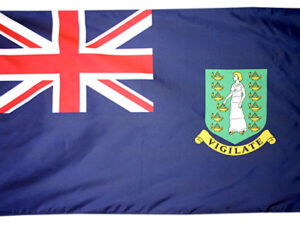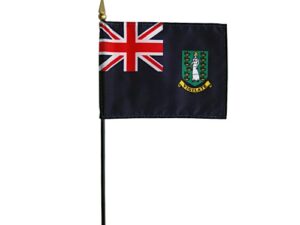The flag of the British Virgin Islands is a blue field with the Union Jack in the top left corner. On the right side, towards the fly end, there is the coat of arms of the British Virgin Islands.
The coat of arms depicts a green shield with a depiction of Saint Ursula, the patron saint of the islands, holding a palm frond. A sailor holds a golden fluke of sugar cane, while a woman holds a golden spiny lobster, supporting the shield. The crest is a golden helmet with a red and white mantling and a lion holding a golden paddle.
The blue background of the flag represents the ocean, which surrounds the islands. The Union Jack represents the British colonial history of the islands. The coat of arms represents the culture and natural resources of the British Virgin Islands. It includes their maritime heritage and the abundance of fish and lobster in the waters surrounding the islands.
On November 15, 1960, the BVI adopted the current design of the flag. This happened when the country became a separate colony from the Leeward Islands.



